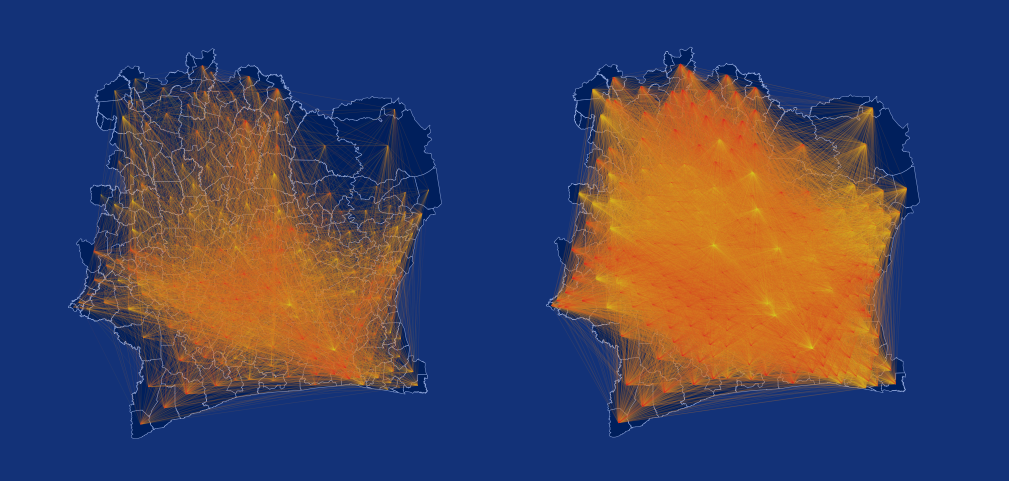Disease Containment Strategies based on Mobility and Information Dissemination
Antonio Lima, Manlio De Domenico, Veljko Pejovic, Mirco Musolesi
In Nature Scientific Reports. 5:10650. Nature Publishing Group. June 2015.
Human mobility and social structure are at the basis of disease spreading. Disease containment strategies are usually devised from coarse-grained assumptions about human mobility. Cellular networks data, however, provides finer-grained information, not only about how people move, but also about how they communicate. In this paper we analyze the behavior of a large number of individuals in Ivory Coast using cellular network data. We model mobility and communication between individuals by means of an interconnected multiplex structure where each node represents the population in a geographic area (i.e., a sous-préfecture, a third-level administrative region). We present a model that describes how diseases circulate around the country as people move between regions. We extend the model with a concurrent process of relevant information spreading. This process corresponds to people disseminating disease prevention information, e.g., hygiene practices, vaccination campaign notices and other, within their social network. Thus, this process interferes with the epidemic. We then evaluate how restricting the mobility or using preventive information spreading process affects the epidemic. We find that restricting mobility does not delay the occurrence of an endemic state and that an information campaign might be an effective countermeasure.
